Circuit-Zone.com - Electronic Projects
Posted on Wednesday, November 7, 2012 • Category: Battery Chargers
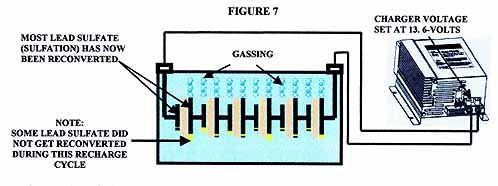
Lead Acid batteries have changed little since the 1880's although improvements in materials and manufacturing methods continue to bring improvements in energy density, life and reliability. All lead acid batteries consist of flat lead plates immersed in a pool of electrolyte. Regular water addition is required for most types of lead acid batteries although low-maintenance types come with excess electrolyte calculated to compensate for water loss during a normal lifetime.
Lead acid batteries used in the RV and Marine Industries usually consist of two 6-volt batteries in series, or a single 12-volt battery. These batteries are constructed of several single cells connected in series each cell produces approximately 2.1 volts. A six-volt battery has three single cells, which when fully charged produce an output voltage of 6.3 volts. A twelve-volt battery has six single cells in series producing a fully charged output voltage of 12.6 volts.
Posted on Tuesday, February 14, 2012 • Category: Battery Chargers
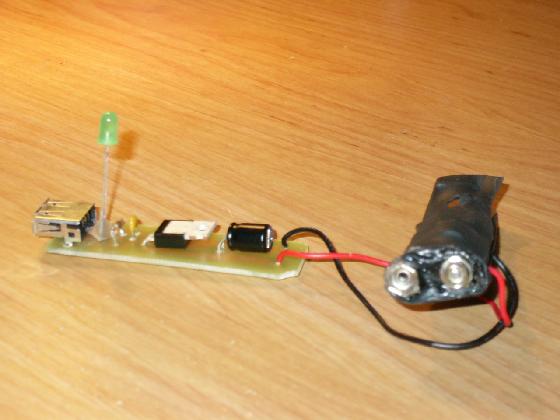 Portable USB Charger is a device that will charge things like Ipods, PDAs, that accepts charge from a USB port. It runs off a 9-V battery, and through the simple circuit, out comes a regulated 5-V perfect for a USB port. Portable USB chargers will always be handy, lets face it these days every gadget around us has USB charging capabilities. This is a very basic and simple project, and cheap too. Maybe its time for you to build your own diy portable USB charger.
Posted on Wednesday, July 13, 2011 • Category: Battery Chargers
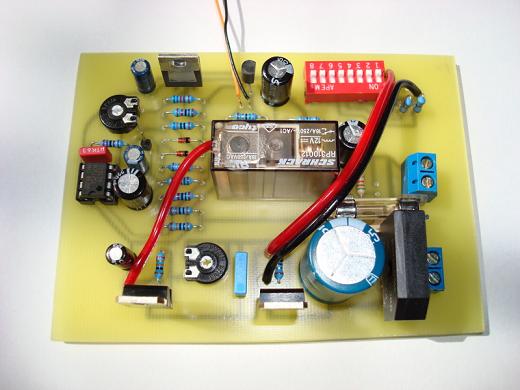 Automatic battery charger automatically starts the charging procedure when battery voltage drops below a certain predefined value and stops after the voltage has risen above the maximum allowed value. Setup can't be easier, just connect two alligator clips to battery terminals and plug the device in mains. This way it can stay connected for months and the battery will never overcharge. This comes very very handy when you have a scooter or a real motorcycle that you don't drive during the winter time. Because we all know what happens to a battery when not used and especially during the winter.
Posted on Tuesday, June 28, 2011 • Category: Battery Chargers
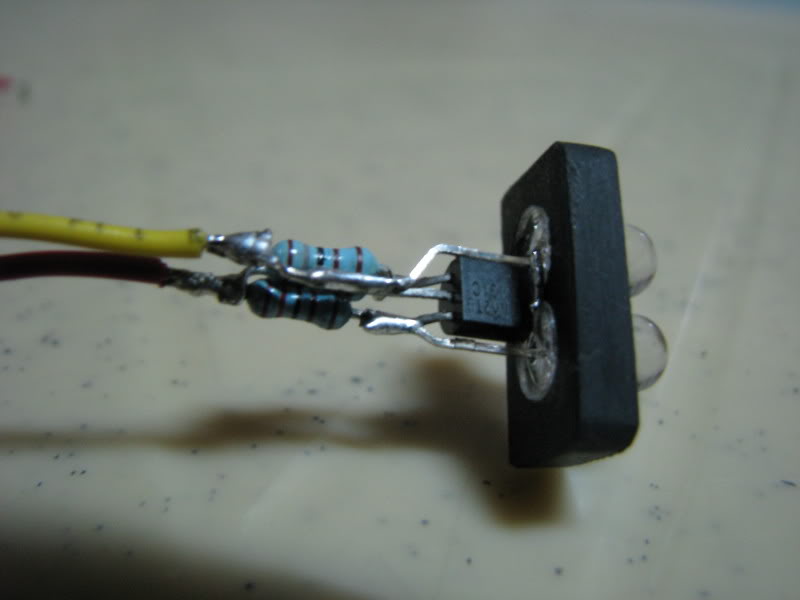 Lipoly batteries are great power source for our AEGs, they offer high current capacities and are available in different shapes and sizes that can fit virtually any AEG. But they have a downside, they are prone to failures when over discharged. Their nominal voltage is 3.7V (4.2V-full charge) but must not go below their critical voltage of 2.7V.
New development in AEG electronics protect the battery from going too low by either cutting the power or an audible warning that indicates low battery voltage. While saving up for the "Panther" or "Cheetah" SW-COMP, here is a cheap and easy to construct 11.1V lipoly lo-batt indicator.
Posted on Friday, June 24, 2011 • Category: Battery Chargers
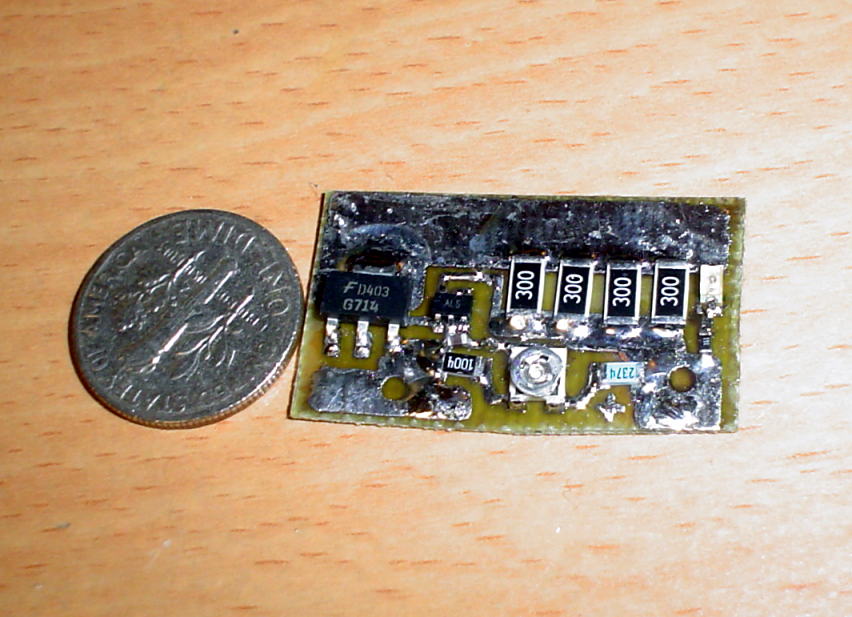 Simple LIPO saver board to throw onto lithium based batteries for overvoltage protection. It consists of a TLV3012 comparator with onboard reference, an voltage divider, load resistors, indicator LED and a transistor. It should turn on the transistor, and load LIPO battery cell when its voltage is >4.25V
Ive attached LIPO saver schematic. The diode represents the onboard reference in the comparator, eagle didn't have the device in its library.
Posted on Friday, June 24, 2011 • Category: Battery Chargers
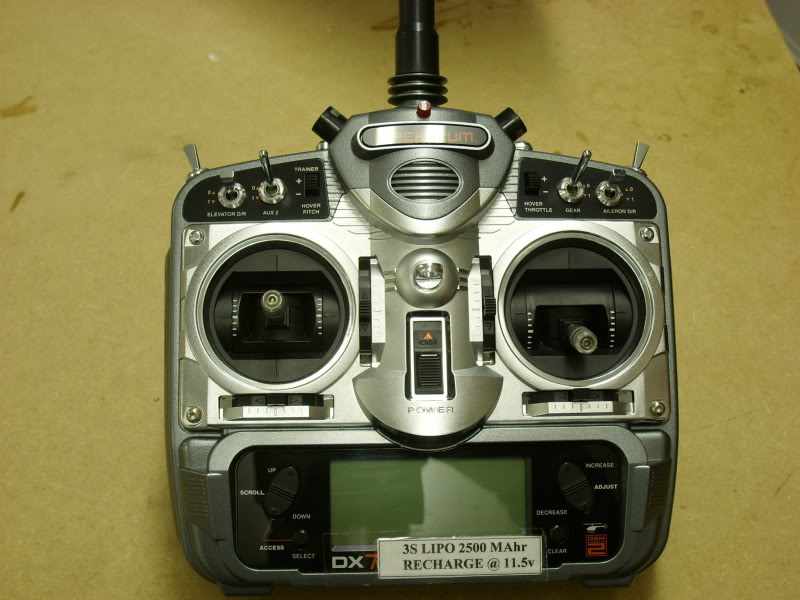 The presented battery saver or TL431 LiPo Saver is designed to prevent deep discharge of lithium polymer batteries. Decreases the cell voltage of a LiPo batteries below 2.4 volts will permanently damage the cell. When LIPO battery is about to reach the critical voltage a buzzer alarm is activated. I have built several of these for use as Tx alarm and they do SCREAM especially if you fit twin piezo sounders. TL431 is adjusted to sound off at pretty much any low voltage level you wish.
Posted on Wednesday, June 15, 2011 • Category: Battery Chargers
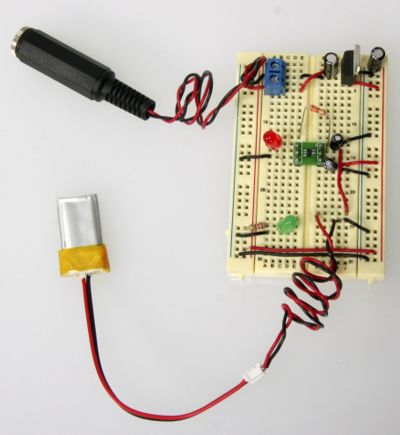 This is LiPo battery charger circuit based around the MAX1551 / MAX1555 chip from Maxim ICs. And it happens to be a very easy chip to use. I used the typical circuit from the datasheet and referred to the pin out to see which pin is what. I also used adapter board so that I could prototype the LiPo battery charger on a breadboard. The barrel plug towards the top goes into an LM7805 that can take 7-16V and regulates it down to 5V. Besides that, pretty simply stuff with only a handful of common components.
Posted on Sunday, May 15, 2011 • Category: Battery Chargers
 Here is a simple battery charger circuit intended for 12 Volt gell-type battery. Current is limited by the 7805 regulator IC and the limiting resistor (62 ohms) to approximately 250 milliamperes, anyway most small sized gell-type battery capacities ranges from 2.5AH to 7.5AH so charging time should take several hours. When the battery is full, the regulator adjust its voltage output from 15 volts down to 5 volts automatically terminate the charging process.
Posted on Saturday, May 14, 2011 • Category: Battery Chargers
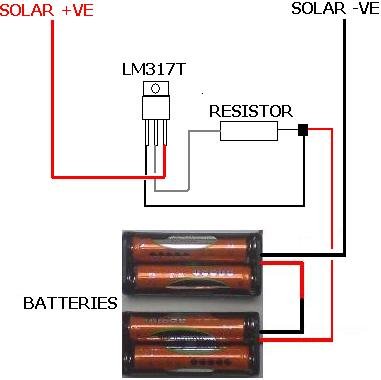 This is a solar panel battery charger schematic for AA and AAA rechargeable batteries. A small solar panel would be very good as a source of voltage charger. Building a solar AA battery charger only requires a few components and a simple construction.
Solar panels should be well adapted to the battery to be charged or the battery may be overcharged. If you want to charge batteries with different capacities, then you need to change the solar panels.
Since this is a simple solar battery charger that does not automatically turn off when the battery is full. So we need to maintain the charging current is low enough that will not damage the battery even when they are fully charged.
An LM317T voltage regulator chip that can be used with a suitable resistor to regulate current. See solar AA battery charger
Posted on Wednesday, April 6, 2011 • Category: Battery Chargers
 Here's a simple and inexpensive compact lithium ion / polymer battery charger based on Microchip's MCP73831 IC. It features adjustable current charging from 15mA up to 500mA for single cell lipo batteries. With this lipo charger just a few external components are needed. Constant voltage power supply of 5 ~ 6V is needed. Power can also be drawn from USB port. When USB power is 150mA charge current should not be higher. Charge current can be adjusted with external resistors. External LED provides status when lipo battery is fully charged. The LED lights when battery is fully charged. The maximum charging voltage is selectable from 4.2 to 4.5. This has to be chosen at the time of purchase. Typically 4.2V is a standard charging voltage. MCP73831-2 <- 4.2V, MCP73831-3 <- 4.3V, MCP73831-4 <- 4.4V, MCP73831-5 <- 4.5V.
Posted on Friday, March 11, 2011 • Category: Battery Chargers
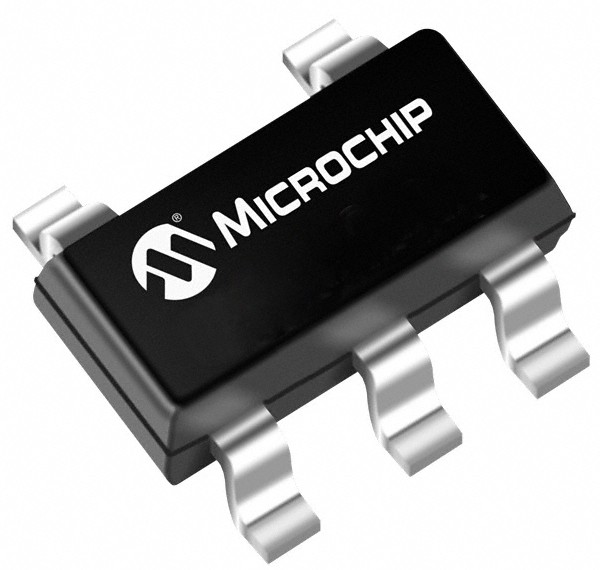 Microchip announced the expansion of its analog power-management family with the MCP73831 battery charger, a fully-integrated, single-cell, Li-ion/Li-Polymer charge-management controller.
Tiny 500mA linear charge management controller can be powered directly from the USB port. Includes integrated pass transistor, current sense and reverse-discharge protection, the MCP73831 charger reduces the number of components needed for battery-charger designs. Its highly accurate, pre-set voltage regulation (maximum accuracy 0.5 per cent to 0.75 per cent) results in more fully charged batteries and extended battery life.
Since the MCP73831 charge-management controller includes a pass transistor, current sense and reverse-discharge protection on a single chip, it reduces the number of system components needed for battery-charger designs, which, added Microchip, lowers overall system costs.
Posted on Friday, December 3, 2010 • Category: Battery Chargers
 A battery is a vital element of any battery-backed system. In many cases the battery is more expensive than the system it is backing up. Hence we need to adopt all practical measures to conserve battery life.
As per manufacturer's data sheets, a 12V rechargeable lead-acid battery should be operated within 10. IV and 13.8V. When the battery charges higher than 13.8V it is said to be overcharged, and when it discharges below 10.IV it can be deeply discharged. A single event of overcharge or deep discharge can bring down the charge-holding capacity of a battery by 15 to 20 per cent.
It is therefore necessary for all concerned to monitor the charge level of their batteries continuously. But, in practice, many of the battery users are unable to do so because of non-availability of reasonably-priced monitoring equipment. The circuit idea presented here will fill this void by providing a circuit for monitoring the charge level of lead-acid batteries continuously.
Posted on Friday, November 12, 2010 • Category: Battery Chargers
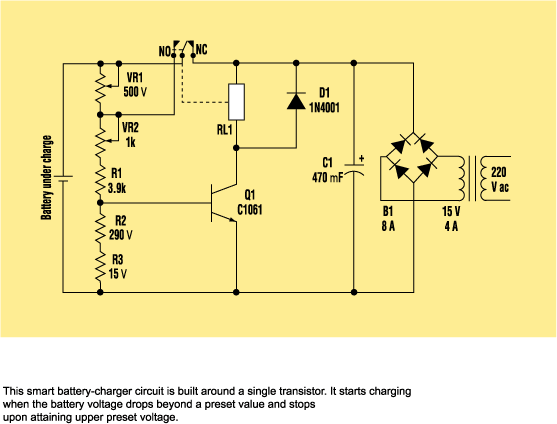 The following automatic battery-charger design is created with a circuit that could qualify as the simplest window comparator ever built around a single transistor. It starts charging when the battery voltage drops beyond a preset value, and it stops when an upper preset voltage is attained.
With the help of a precise variable voltage supply, the upper and lower voltage levels were set. The normally connected (NC) lead of the relay isn't joined to the 15-V dc supply, which blocks this voltage from passing to the battery leads. This will accurately set the upper and lower levels. But the charging supply of 15 V dc was connected to the circuit.
Posted on Thursday, October 21, 2010 • Category: Battery Chargers
 Here is a lead acid battery charger circuit using IC LM317.The IC here provides the correct charging voltage for the battery. A battery must be charged with 1/10 its Ah value. This charging circuit is designed based on this fact.The charging current for the battery is controlled by Q1,R1,R4 and R5. Potentiometer R5 can be used to set the charging current. As the battery gets charged the the current through R1 increases.
Posted on Tuesday, October 19, 2010 • Category: Battery Chargers
 This is a portable USB Charger. It uses a high efficiency switching regulator that runs at 85 - 94% efficiency depending on input voltage and load.
It takes an input voltage from 8 to 16 volts and can run from anything from a 9 volt battery to a car battery.
It has 2 USB ports and easily charges 2 power hungry devices at once.
Posted on Monday, October 11, 2010 • Category: Battery Chargers
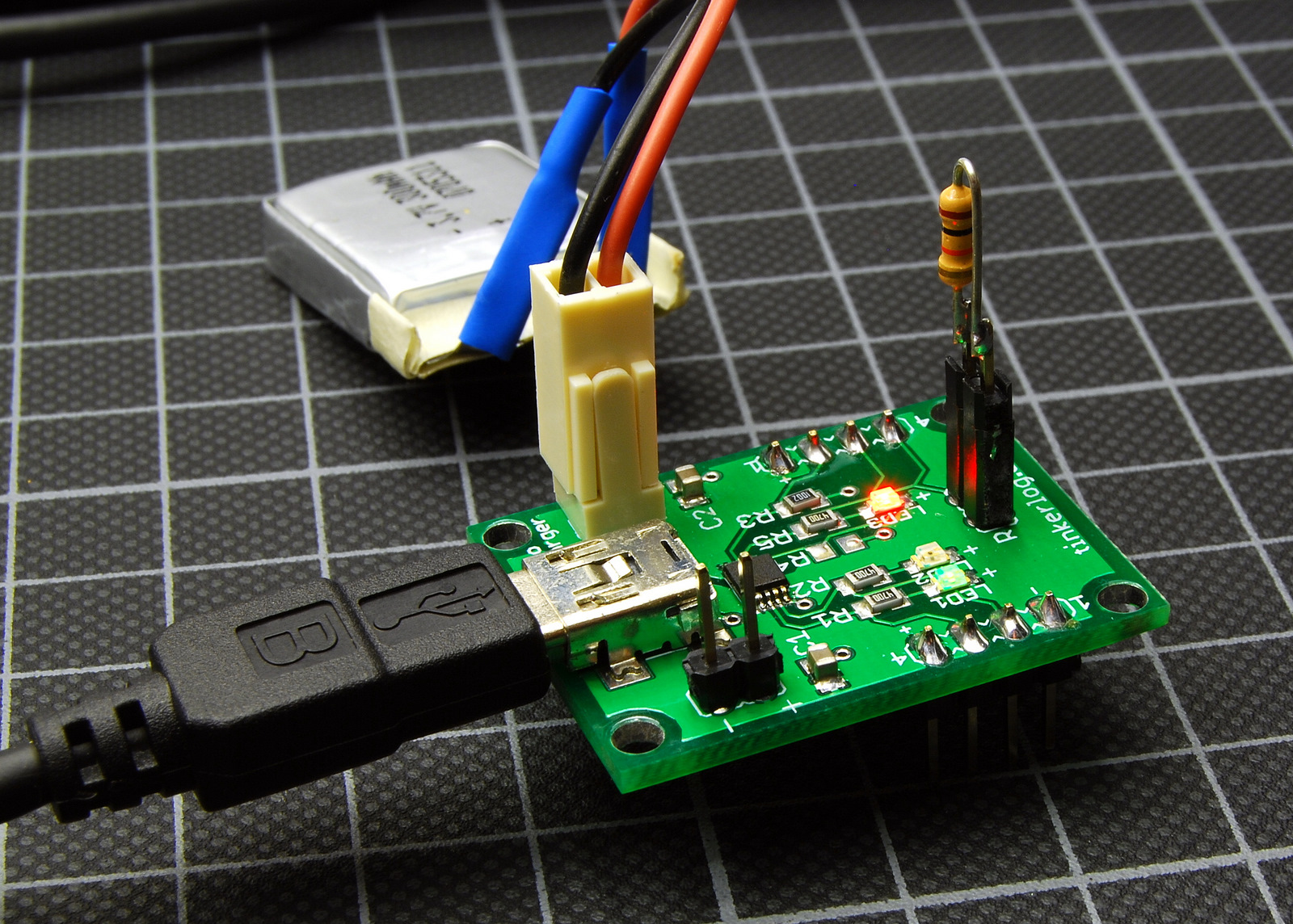 For my latest projects I used a lot of single cell lipo batteries. They are really nice. High power density, low self-discharge, no memory effect and they can deliver quite an amount of current.
But lipo battery handling is a bit more complicated as with other rechargeable batteries. You have to take care of under voltage and over charging as that may destroy the battery.
Posted on Thursday, May 27, 2010 • Category: Battery Chargers
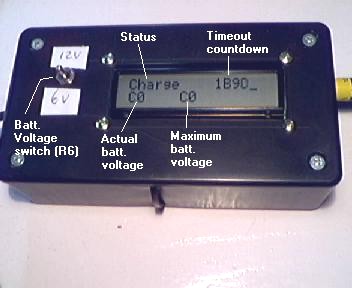 This battery charger charges a NIMH 5-pack battery used in the BiPed robot in less than 1 hour, and charges the 10-pack NiCd used in the Snuf robot in about 30 minutes. To prevent overheating of the battery, the charging current is turned off when the slope of the battery-voltage turns from positive into negative. A second termination-criterion of the charging process is provided for safety: the charge time is limited to about 1 hour.
Posted on Sunday, May 2, 2010 • Category: Battery Chargers
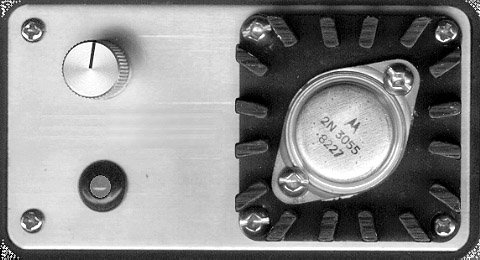 The electric model aircraft and car industries have produced a bewildering array of field chargers for NiCd motor battery packs. These range from simple 6 or 7 cell chargers consisting of a resistor and mechanical timer, to more complex chargers with peak detection, cycling, and the ability to handle 36 cell packs.
Posted on Wednesday, April 28, 2010 • Category: Battery Chargers
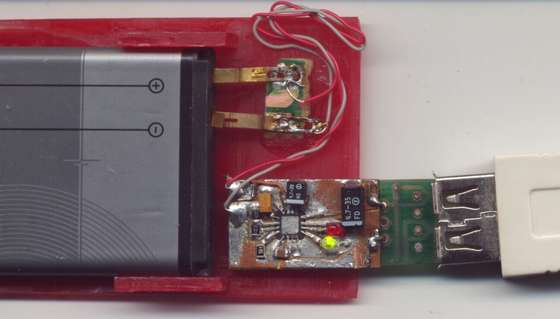 This is a charger for lithium ion batteries which takes its power from the USB port of a computer.
It uses the MCP73861 or MCP73863 Li-ion battery charger chip manufactured by Microchip.
Microchip MCP73861 or MCP73863 are advanced, fully-integrated, single-cell Li-Ion/Li-Polymer charge-management devices allow these peripherals to utilize the full power of the USB port.
Posted on Wednesday, April 28, 2010 • Category: Battery Chargers
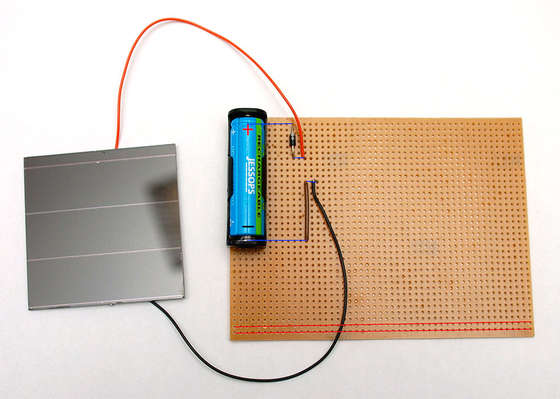 This instructable will show you how to make your own solar battery charger from very simple components. It is taken from my documentation provided with a kit I supply - you should easily be able to source the same components yourself of course.
Posted on Tuesday, April 27, 2010 • Category: Battery Chargers
 Batwatch is a simple monitor for a solar panel battery charger, using an Atmel ATtiny13V. It periodically measures the charge current and battery voltage, and shows them by blinking two LEDs. I built this circuit into the plug of a VW solar charger panel that is used to prevent a discharge of the battery when a car is not used for some time. A modern car contains a large amount of electronics, and a quiescent current of 40-50mA (about 1Ah per day!) is considered "normal".
Posted on Thursday, April 22, 2010 • Category: Battery Chargers
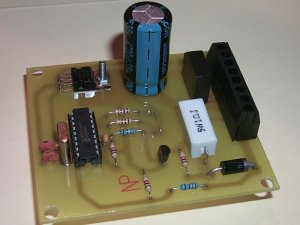 This cheap and easy to build NiCd/NiMH Battery Charger is suitable for automatically charging a wide range of batteries for many applications. Proper chargers are usually expensive and cheap chargers supplied with the original equipment often incorrectly charge the cells and dramatically shorten their life.
Posted on Thursday, April 22, 2010 • Category: Battery Chargers
 This is a MAX1811 based USB charger that can handle both Lithium Ion and Lithium Polymer 3.7V battery. It requires very few external components and provides ability to select between 4.1v and 4.2v battery regulation for different types of LiPo batteries. You can select between either 100mA and 500mA current charging mode and LED provides the status of the charging.
Posted on Wednesday, April 21, 2010 • Category: Battery Chargers
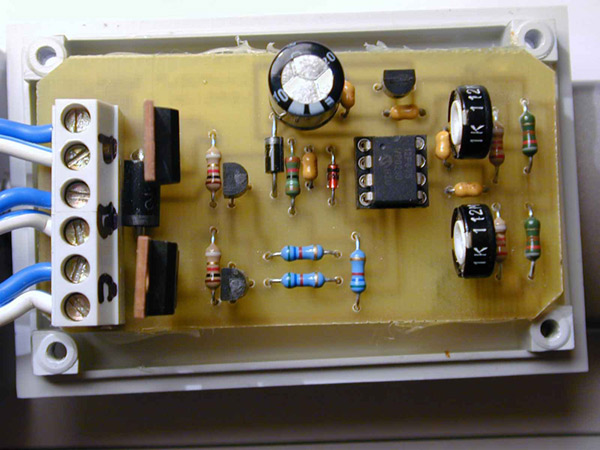 The purpose of this project is to realize a Solar panel controller. Initially developed for a sailing boat, the target to reach was to control the level of charge and discharge and to protect a 12 volts lead battery connected to a 32 watts solar panel.
Posted on Tuesday, April 20, 2010 • Category: Battery Chargers
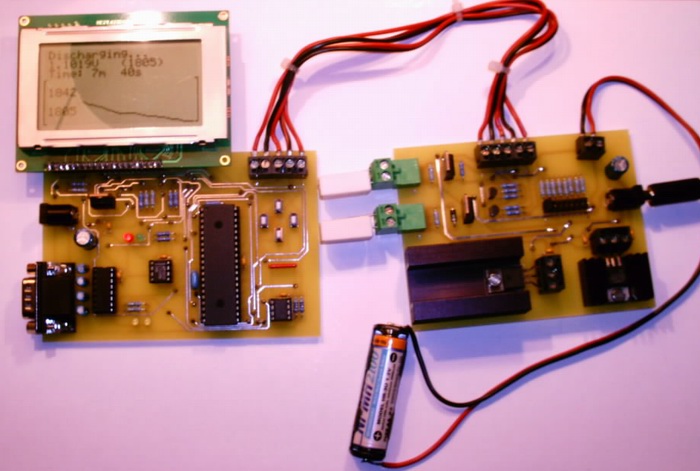 The accu cycler project presented here is an excellent solution for charging and discharging NiCd and NiMH accumulators for R/C modelers and others who make use of these accumulator types. With its performance it is very close to the many of the commercial products available on the market.
Posted on Friday, April 16, 2010 • Category: Battery Chargers
 This is a NiCd/Ni-MH charger that can charge with constant current and automatic charge termination when the total voltage for all cells reach the setting voltage.
Posted on Thursday, April 15, 2010 • Category: Battery Chargers
 This is a Li-Po charger and balancer project for R/C hobby.The charger circuit is based on the circuit of Electron head and all folks in the DIY electronics topic on the rcgroups.com.
Posted on Thursday, April 15, 2010 • Category: Battery Chargers
 This is a simple to build charger for single 3.7V lipo battery. The heart of the charger is TL431 shunt regulator that controls the incoming current. Charger comes with a convenient charging LED indicator. As charging current goes down so does the intensity of the LED.
Posted on Saturday, October 31, 2009 • Category: Battery Chargers
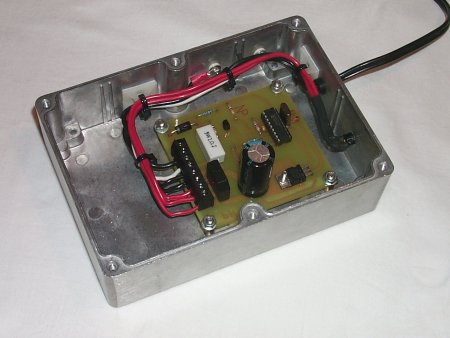 This cheap and easy to build NiCd/NiMH Battery Charger is suitable for automatically charging a wide range of batteries for many applications. Proper chargers are usually expensive and cheap chargers supplied with the original equipment often incorrectly charge the cells and dramatically shorten their life. This 'intelligent' charger was designed for high current and rapid charge applications such as cordless power tools and model racing cars. These battery packs are expensive and sometimes difficult to purchase. This charger uses the cell manufacturer's recommended charge method, to safely and quickly charge batteries.
Posted on Tuesday, October 27, 2009 • Category: Battery Chargers
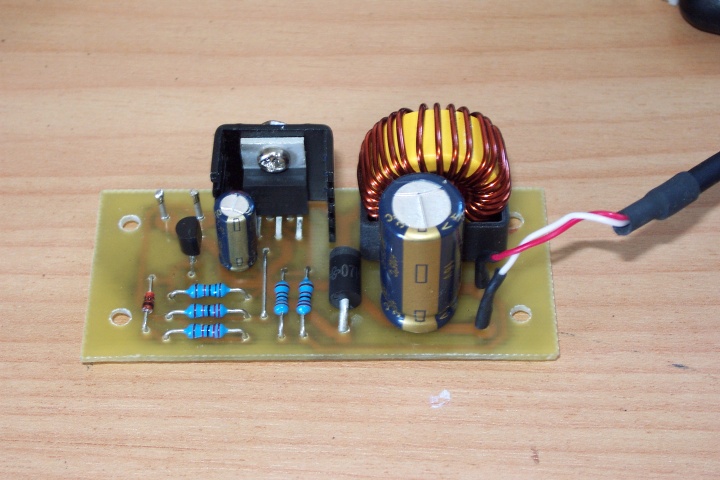
« Atheros Drivers
ASUS Eee Car Charger
Building a 12v car charger for the ASUS Eee
The ASUS Eee is a fantastic ultra-portable notebook with almost everything required for geeks (and nothing that isn’t). Plus it features fantastic build quality and is very well priced. If you live in New Zealand you can get them from DSE; at the time of writing they are the exclusive supplier. I worked out it’s the same cost as importing one once you include all the duties and tax, plus you get the advantage of a proper NZ-style mains charger.
Anyway, being so small I thought it would be nice to be able to carry this around in the car. Unfortunately I couldn’t find a car charger available anywhere at the time so I decided to tackle the problem myself. As a bonus this provides an opportunity for an external high-capacity battery.
Commercial Equivalent
I thought at this stage it would be worth noting that a commercial car charger is now available for less than it cost me to build this from Expansys and is available in most countries (select your location on their site). It outputs 9.5v from 10-18v in at up to 2.5A
I’d actually recommend it over the design here is it seems to perform better at lower voltages (that one works down to 10V). However I have kept this page up as a reference for those who enjoy tinkering.
Design
The charger included with the Eee is rated at 9.5v, 2.315A. There isn’t a fixed voltage regulator available for this exact voltage, so the circuit needed to be designed around an adjustable regulator.
I decided to design the charger around the LM2576 “Simple Switcher” IC from National Semiconductor. There are tons of ICs like this available, many of which are a bit more efficient, however I selected this one because it is readily available and relatively cheap. It also has a lower drop-out voltage (~2V) than many other chips I looked at which is important when powering the device from a car or 12v SLA battery.
Posted on Saturday, August 22, 2009 • Category: Battery Chargers
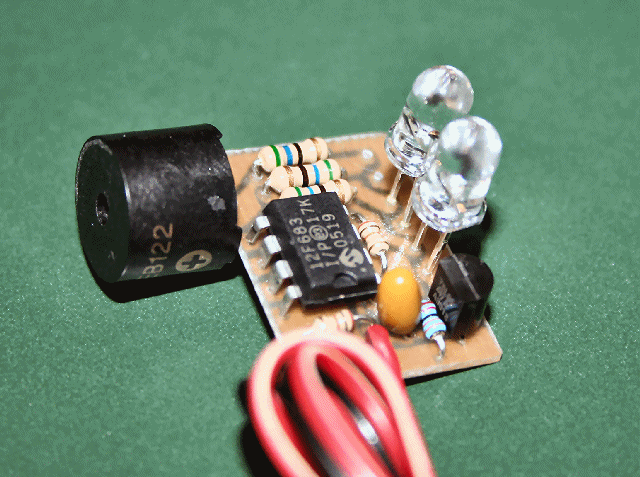 The Simple-Volt automatically detects the number of LiPo cells connected (assume charged pack) and continually monitors the battery voltage and compares it to the preset cutoff/warning voltage corresponding to the number of detected LiPo cells (9v for 3s, 12v for 4s and 15v for 5s... basically, 3 volts minimum per cell).
When the battery voltage is greater than the cutoff voltage +1v, the Green LED will be on solid. If the battery voltage is > cutoff voltage+.5 but < cutoff voltage+1v, the Green LED will slowly flash. If the battery voltage is > cutoff but < cutoff+.5v, then the Red LED will begin flashing. If the battery voltage < cutoff voltage, both Green and Red LEDs will flash very fast while also emitting an intermittent beeping sound from the peizo alarm buzzer.
Posted on Thursday, August 20, 2009 • Category: Battery Chargers
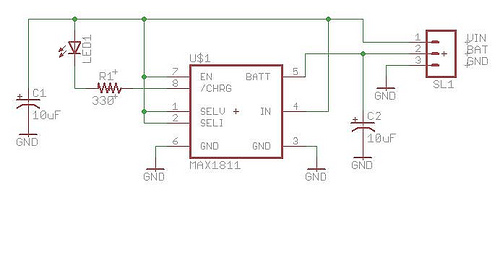 This is a MAX1811 based USB charger that can handle both Lithium Ion and Lithium Polymer 3.7V battery. It requires very few external components and provides ability to select between 4.1v and 4.2v battery regulation for different types of LiPo batteries. You can select between either 100mA and 500mA current charging mode and LED provides the status of the charging.
Posted on Thursday, August 20, 2009 • Category: Battery Chargers
 The MAX1551 and MAX1555 charge a single-cell 3.7V lithium-ion LiPo battery from both USB and AC adapter sources. They operate with no external FETs or diodes, and accept operating input voltages up to 7V.
On-chip thermal limiting simplifies PC board layout and allows optimum charging rate without the thermal limits imposed by worst-case battery and input voltage. When the MAX1551 and MAX1555 thermal limits are reached, the chargers do not shut down, but progressively reduce charging current.
The MAX1551 includes an active-low POK output to indicate when input power is present. If either charging source is active, active-low POK goes low. The MAX1555 instead features a active-low CHG output to indicate charging status.
With USB connected, but without DC power, charge current is set to 100mA (max). This allows charging from both powered and unpowered USB hubs with no port communication required. When DC power is connected, charging current is set at 280mA (typ). No input-blocking diodes are required to prevent battery drain.
The MAX1551 and MAX1555 are available in 5-pin thin SOT23 packages and operate over a -40°C to +85°C range.
Posted on Thursday, August 20, 2009 • Category: Battery Chargers
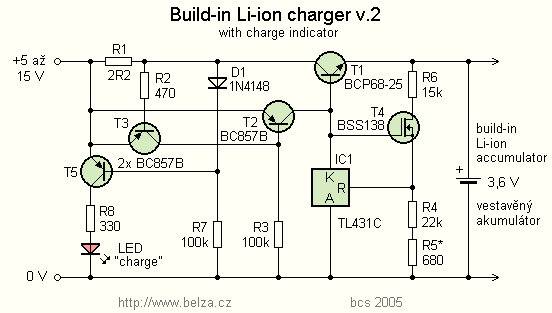 This is a simple to build charger for single 3.7V lipo battery. The heart of the charger is TL431 shunt regulator that controls the incoming current. Charger comes with a convenient charging LED indicator. As charging current goes down so does the intensity of the LED.
Posted on Friday, April 11, 2008 • Category: Battery Chargers
 Lithium Ion batteries pack a lot of power by weight compared to other types. There are 2 things that need to be handled differently than nicad on NiMH:
1. They cannot be used as a direct substitute (even if they look like other AA's) since they run at about 3.6 (or so) volts.
2. They cannot be charged in the same way as nicad or NiMH.
After a bit of research, I came up with this design.
Normally, you put in a specified current (about 0.2C) until 4.2 volts is reached. Then, you keep the voltage tightly regulated at 4.2 volts until the charge rate drops to 10 percent (about 0.02C).
This design uses a regulated supply for both parts of the charging. Only the charging current is monitored since the supply voltage is maintained at 4.2 volts. The charging current is controlled using variable pulse width of the voltage feed.
Posted on Tuesday, April 1, 2008 • Category: Battery Chargers
The charger in this project is designed to charge two AA NiMH or NiCd cells of any capacity (as long as they are the same) at about 470mA. It will charge 700mAh NiCds in about 1.5 hours, 1500mAh NiMHs in about 3.5 hours, and 2500mAh NiMHs in about 5.5 hours. The charger incorporates an automatic charge cut-off circuit based on cell temperature, and the cells can be left in the charger indefinitely after cut-off.
Circuit-Zone.com © 2007-2025. All Rights Reserved.
|
|
|